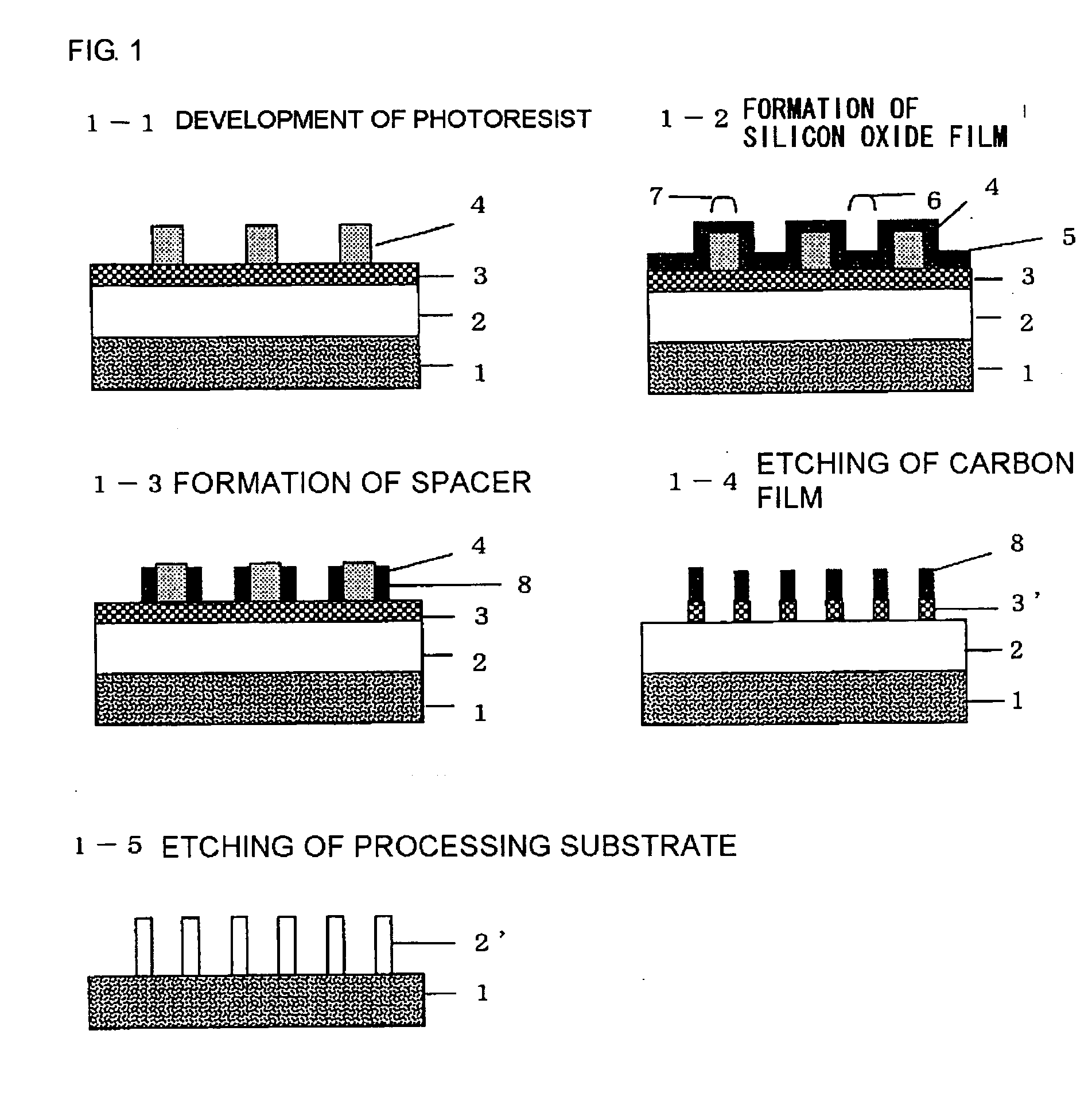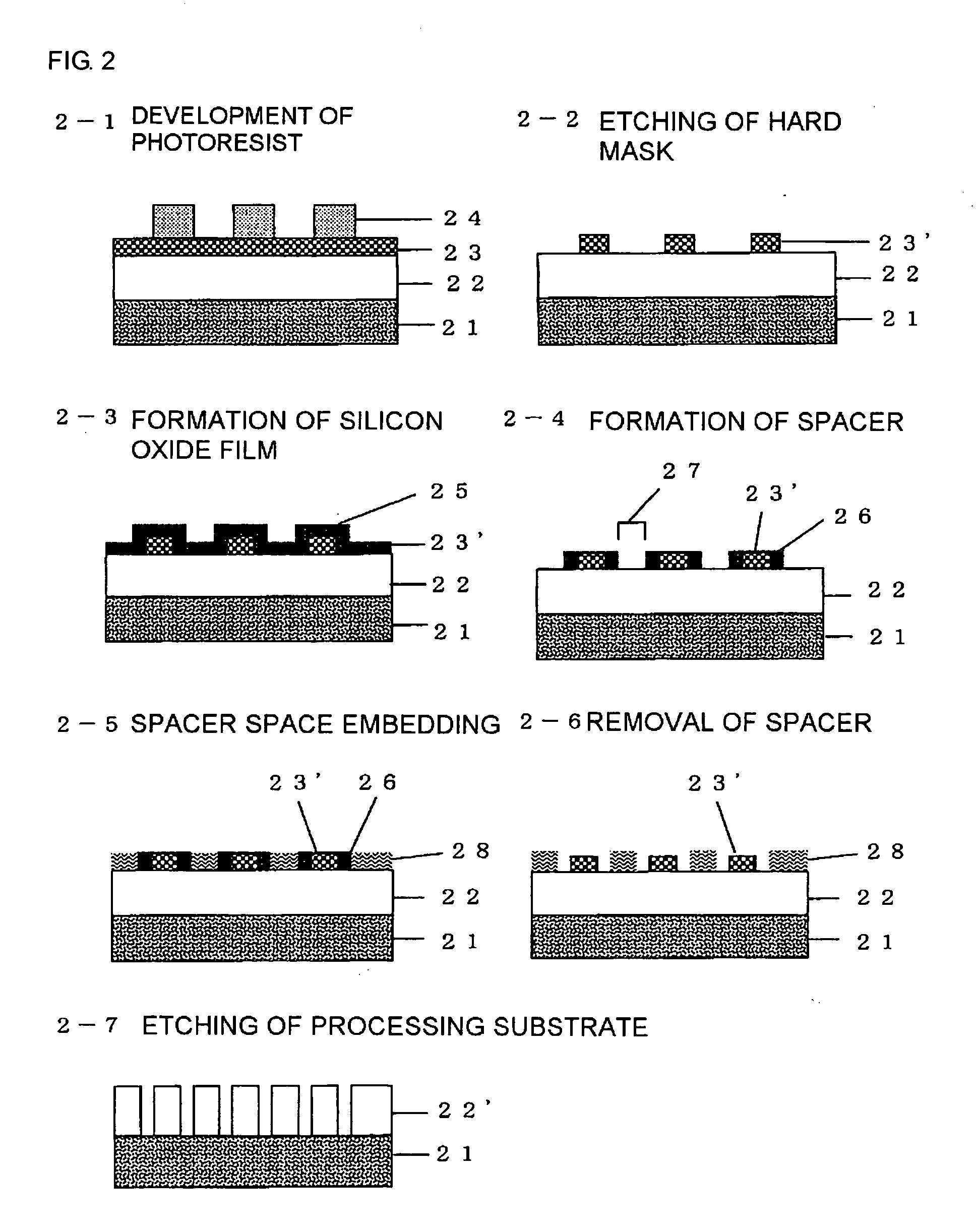Patterning process
a pattern and pattern technology, applied in the field of patterning process, can solve the problems of reducing the lwr and reducing the dimension of the photoresist pattern, and achieve the effect of avoiding the deterioration of the photoresist profil
- Summary
- Abstract
- Description
- Claims
- Application Information
AI Technical Summary
Benefits of technology
Problems solved by technology
Method used
Image
Examples
example
[0109]Hereinafter, the present invention will be described specifically by Examples and Comparative Examples, but the present invention is not restricted by Examples and the like described hereinafter. Here, a weight-average molecular weight is an equivalent weight-average molecular weight relative to polystyrene measured by GPC.
Synthesis Examples of Base Polymers
[0110]A base polymer added in a photoresist film composition was obtained as following; each monomer as shown below was combined and copolymerized in tetrahydrofurane as a solvent, and a resulting product was crystallized out in methanol, washed repeatedly with hexane, isolated, and dried to obtain a copolymer (base polymer) with a composition as shown below (polymers 1 to 9 and comparative polymers 1 and 2). Composition of an obtained base polymer was determined by 1H-NMR, and a molecular weight (weight average molecular weight) and a dispersivity (molecular weight distribution) were obtained by a gel permeation chromatogr...
PUM
| Property | Measurement | Unit |
|---|---|---|
| Young's modulus | aaaaa | aaaaa |
| Young's modulus | aaaaa | aaaaa |
| wavelength | aaaaa | aaaaa |
Abstract
Description
Claims
Application Information
 Login to View More
Login to View More - R&D
- Intellectual Property
- Life Sciences
- Materials
- Tech Scout
- Unparalleled Data Quality
- Higher Quality Content
- 60% Fewer Hallucinations
Browse by: Latest US Patents, China's latest patents, Technical Efficacy Thesaurus, Application Domain, Technology Topic, Popular Technical Reports.
© 2025 PatSnap. All rights reserved.Legal|Privacy policy|Modern Slavery Act Transparency Statement|Sitemap|About US| Contact US: help@patsnap.com



